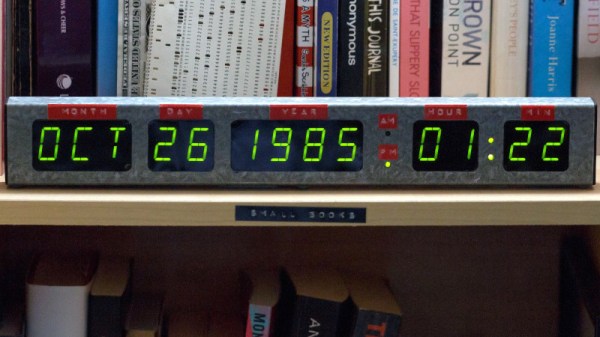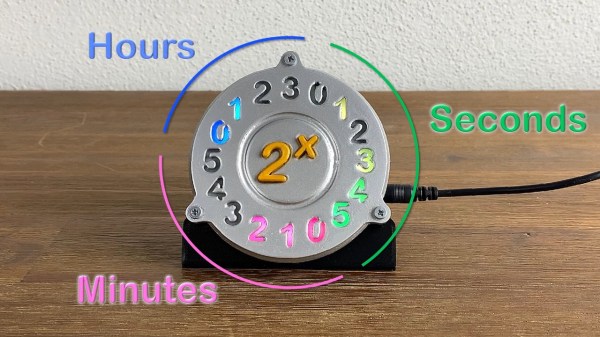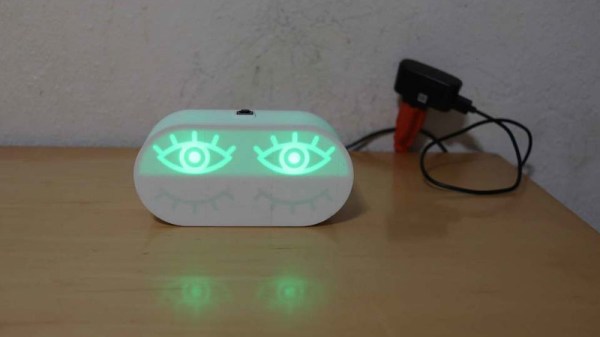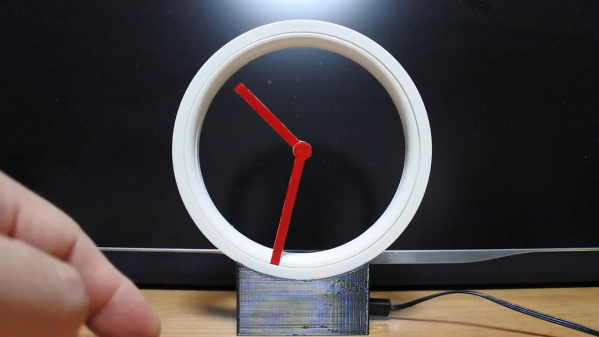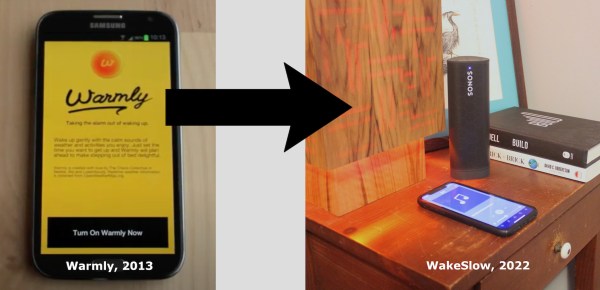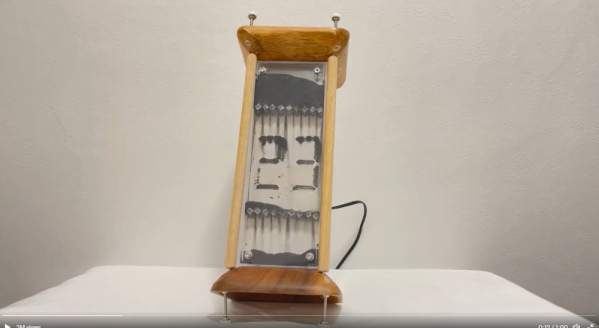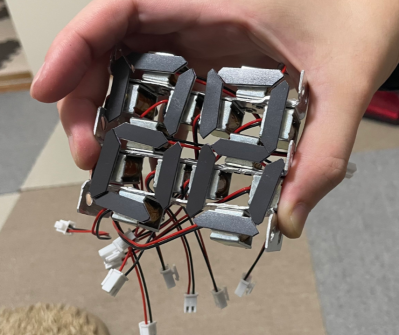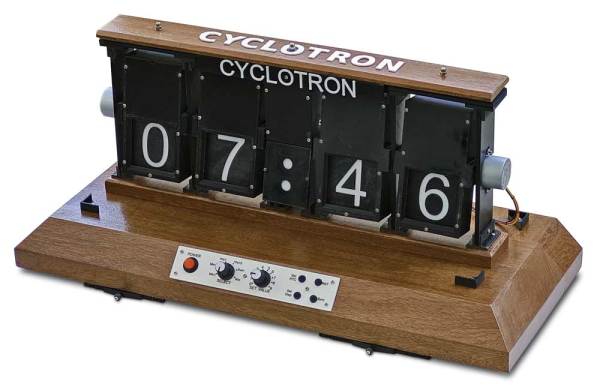[Stephen Holdaway] needed a desk clock, and decided to whip something up from scratch. The result is a beautiful tribute to the DeLorean’s time circuits from legendary 1985 film Back to the Future.
We say it’s a tribute rather than an exact replica, as it only implements the “present time” section of the time circuits. However, for those of us without time machines, that’s more than enough. In any case, the build is a very faithful recreation. It uses a lovely sheet metal enclosure complete with era-appropriate sticky labels.
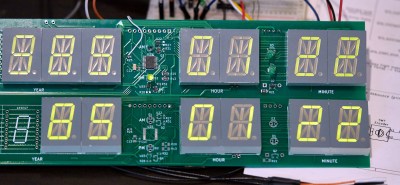 Naturally, the numerals are all shown on green segment displays, though [Stephen] used 16-segment devices instead of the more typical 7-segment parts. What really helps add to the look is the shaded acrylic windows, which adds a very nice effect.
Naturally, the numerals are all shown on green segment displays, though [Stephen] used 16-segment devices instead of the more typical 7-segment parts. What really helps add to the look is the shaded acrylic windows, which adds a very nice effect.
It’s a nice tribute piece that any fan would instantly recognize. We’ve seen some other great builds, too, like this replica of the RC controller that first gets the DeLorean up to 88 mph. If you’ve been whipping up your own neat prop project, don’t hesitate to hit us up on the tipsline!

